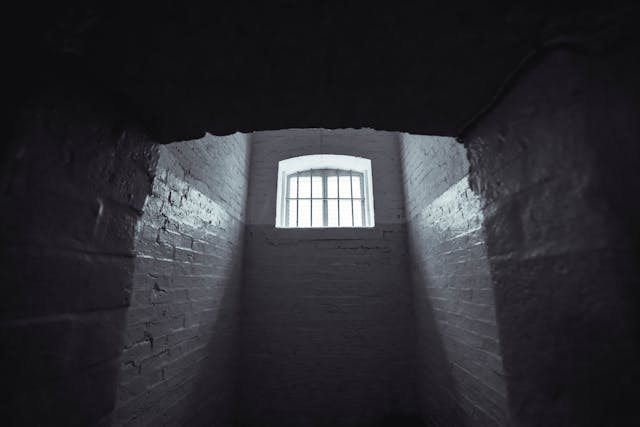Home » News » 2024 » December
News Brief
Dec. 19, 2024Houston |
By: AP
US carries out 25 executions this year as death penalty trends in nation held steady

HOUSTON (AP) — The number of executions in the U.S. remained near historic lows in 2024 and was mostly carried out in a small group of states, including Alabama, which became the first state to use nitrogen gas as an execution method, according to an annual report on capital punishment.
The report by the Death Penalty Information Center was released on Thursday, the same day that Oklahoma conducted the nation’s 25th and final execution of the year. Kevin Ray Underwood received a lethal injection Thursday morning for the killing of a 10-year-old girl that was part of a cannibalistic fantasy.
“The dramatic drop in new death sentences over the years, I think is the most current indicator of attitudes and reflects the public’s growing reluctance to use the death penalty,” said Robin M. Maher, executive director of the Washington, D.C.-based nonprofit center, which takes no position on capital punishment but has criticized the way states carry out executions.
Here’s what to know about the use of the death penalty in the U.S. in 2024.
Four states were responsible for 76% of executions
While the number of executions in 2024 was just one more than the previous year, it was the 10th consecutive year with fewer than 30 executions. Four states — Alabama, Missouri, Oklahoma and Texas — carried out 76% of executions this year, according to the center’s report.
In 2024, there were 26 new death sentences, marking the tenth consecutive year with fewer than 50 people sentenced to death.
More than 20 years ago, there were more than double the number of executions and more than five times the number of new death sentences, Maher said.
After the Supreme Court lifted its ban on capital punishment in 1976, executions steadily increased, peaking at 98 in 1999. Since then, executions have continued to steadily drop.
“We are seeing a pretty dramatic decrease in the use of the death penalty, especially in states other than your primary players,” said Michael Benza, a law professor at Case Western Reserve University in Cleveland.
Alabama becomes first state to use nitrogen in an execution
Benza said while more and more states are becoming “de facto abolition states” by not actively carrying out executions, their use remains strong in a small number of states, including Alabama, Florida, Oklahoma and Texas.
“It’s always been a sort of uniquely southern institution and it’s becoming more so,” Benza said.
One of these southern states — Alabama — became the first state to use nitrogen gas as an execution method when it put to death Kenneth Eugene Smith in January. Alabama used nitrogen to execute two more inmates in September and November.
Some states have continued looking for new ways to execute people because the drugs used in lethal injections have become difficult to find.
Only nine states executed individuals in 2024. Seven of these nine states rank among the top ten executing states in the modern era, according to the report. Three states — Indiana, South Carolina and Utah — resumed executions after long hiatuses.
Texas, which has been the nation’s busiest capital punishment state, only had five executions in 2024. Executions in Texas have fallen to single digits for eight of the last nine years, according the Texas Coalition to Abolish the Death Penalty, which also released its annual report on Thursday.
“Even as use of the death penalty remains historically low in Texas, it continues to be imposed disproportionately on people of color and dependent largely on geography,” the coalition said in its report.
Missouri has been one the most active death penalty states but that’s likely to change as only eight men remain on its death row, down from nearly 100 in the 1990s.
Death row inmates get support from unlikely sources
While support for the death penalty remains entrenched in Texas, Missouri and Oklahoma, some conservative lawmakers and prosecutors in those states publicly supported efforts to stop several executions.
In Texas, a bipartisan group of lawmakers used an unconventional strategy to delay Robert Roberson’s Oct. 17 execution: issuing a subpoena for Roberson to testify days after he was scheduled to die.
Lawyers for Oklahoma death row inmate Richard Glossip, as well as state prosecutors, appeared before the U.S. Supreme Court in October to jointly ask that his conviction and death sentence be overturned.
In Missouri, county prosecutors and family members of a woman who had been fatally stabbed unsuccessfully petitioned to have Marcellus Williams’ death sentence be commuted to life in prison.
“We saw the most public engagements this past year in cases where the public was outraged about a potential execution,” Maher said.
The U.S. Supreme Court’s diminishing role with the death penalty
The Supreme Court continued to retreat from the role it has historically played in regulating and limiting use of the death penalty, Maher said.
In 2024, the Supreme Court granted just three out of 117 inmate requests to stay an execution or review claims in a case, the report said. This is similar to what the high court has done in recent years.
“They have been very active in denying defendants’ access to the courts, not so active in regulating the state use of the death penalty,” Benza said.
![]()






